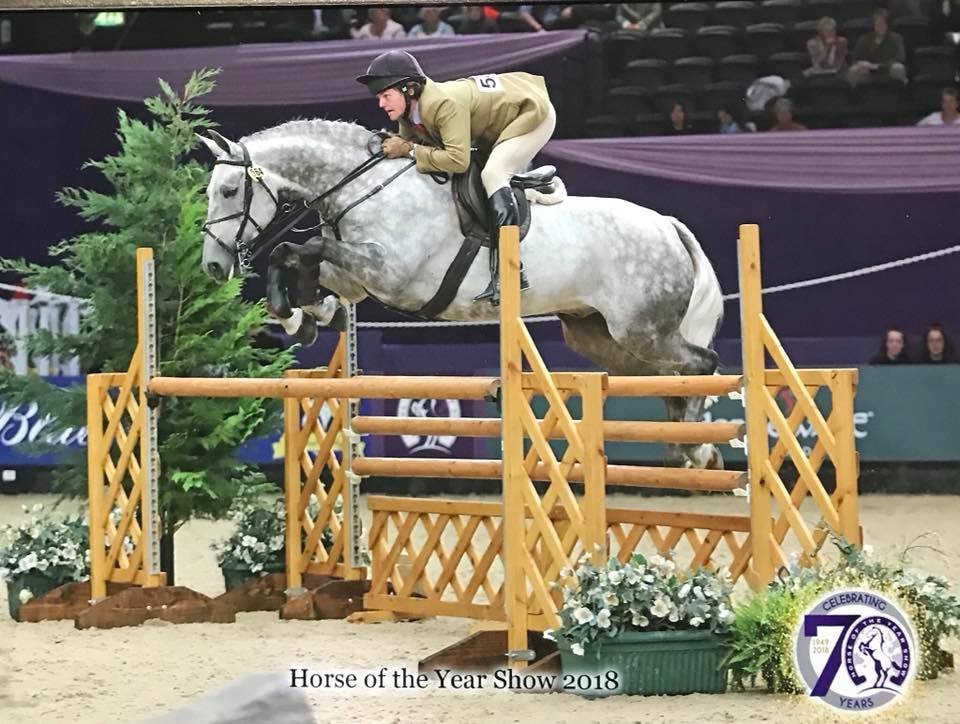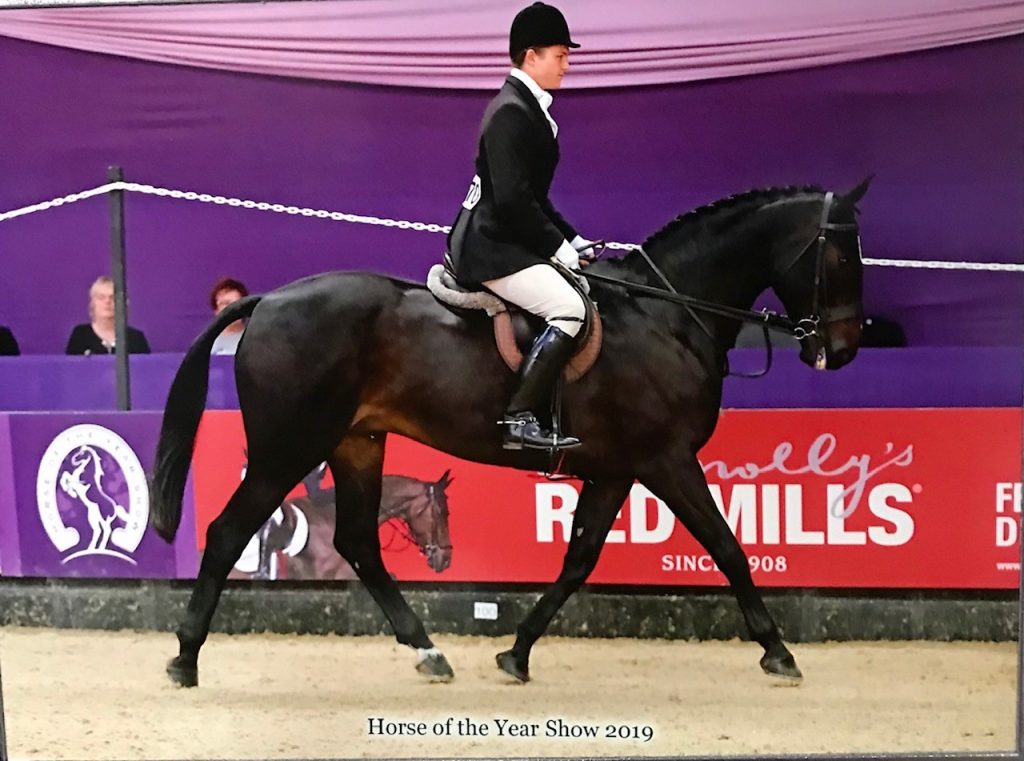Northumberland based show rider William Pittendrigh has taken the showing world by storm. At a young age, William has some great achievements under his belt including winning the Championship at the Royal Windsor Horse Show 2018 and being selected to represent the English Team. Neue Schule are extremely proud to sponsor William and his team of talented horses. We caught up with William and asked him to give us the low down on his recipe for success in the show ring.
1. In the month leading up to the event do you adapt your schooling plan?
It all depends what time of the year it is. My show season begins at the beginning of March so a month prior, my horses are usually still hunting. I like my horses to begin the season as fit as they are when the season finishes. It is vital that that my horses are fit for the amount of travelling they do as well as jumping up to height working hunter tracks. I find hunting keeps my horses in peek condition as well as keeping their brains happy. I tend not to do much competing during the winter but a month prior to the season beginning, I take the horses show jumping to get them back into the competition mode.
Once the season begins, my schooling plan tends to stay the same. As hunting is over, I replace this by cantering up a 1.5 mile gradient field three times a week which I am lucky enough to have permission to use. This is incorporated into my hacking which equates to about four/five miles in total. I school the horses twice a week which will either be a flat, grid work or jumping session and they have one or two days off if they’re competing.
2. What is your preparation the week before?
A week before the competition, the horses are trimmed. It’s important not to leave this to the last minute as it takes a few days for everything to settle down nicely.
If the horses need to be shod, I leave it no later than four days before a show to get them done as I don’t like to take the risk of nail bind.
If it is a stay away show for more than a couple of days such as Royal Windsor, I like to take the horses to the beach as a sweetener and the sea water is also great for their legs!
3. What is your preparation the night before?
The night before consists of the horses being bathed. I try and plait the morning of the competition but when I am in the ring at 7am or leaving home at stupid o’clock, it just isn’t possible so the horses will also be plaited and hooded too.
I don’t stable bandage my horses, but I do the night before to keep their legs clean and it also saves me time getting them ready to travel in the morning.
Stud holes are also cleaned out and rethreaded/plugged to save time at the shows.
4. Do you get nervous? If so, how do you deal with this?
I used to get incredibly nervous when I first started competing which I would know as my teeth would begin to throb. (I know, very strange!) Now that I have been fortunate enough to have been as successful as I have, I tend to feel pressure rather than nerves, especially at the big shows that I have won at. This feeling tends to last literally until I go into the ring. After that, it’s all focus on fence one! My coping mechanism is focussing on my horse as it clears my mind keeps me in the zone.
5. What do you do to work in at the event?
If I am being totally honest, I do very little. All of my horses are super easy and take very little working in. If I have a spooky horse, I take them for a ride around the showground on a nice long rein to let them have good look at everything. When it comes to working in, I walk, trot and canter them on both reins for about 10 minutes, give them a few jumps building up to just below the height I’ll be jumping in the ring and then I’ll give them a rest. When there are about three left to jump before me, I will go off and have another jump and then go into the ring. All in all equating to about 25 minutes of warm up time.
It’s important that my horses have plenty of energy as some of the courses are incredibly long and up to height.
6. If you had to give 3 golden tips to any show rider what would they be?
- i. Know what your judges like
If you are under a judge that likes a horse with plenty of bone and your horse is of a finer type, chances are you will be marked down for it. I always try to look at my marks after a class and if I get a lower mark for e.g. conformation, I will make a note of that judge for future reference.
- ii. Dare to be different
For manners and way of going, you are requested to do a show of your choice or sometimes it will be a set show which is rare. I would say a good 96% of working hunter riders do the same old thing, walk, trot and canter on both reins with an extension. In my show, I always add a halt transition across the diagonal and then go into canter just to change it up a little! I also know one judge loves to see a flying change, so I am sure to do one if I am ever judged by them.
- iii. Keep your space
In horse classes and flat pony classes, you are requested to do a go round. It is vital that you keep a safe distance between each other. The last thing you want is to get too close behind the horse in front as A. you are risking being kicked and B. you are risking losing your rhythm which is not what you want when the judge is watching you. Always look for a place to circle to find your space and try your very best not to overtake anybody. It is deemed incredibly rude and bad manners to overtake in front of the judge.


